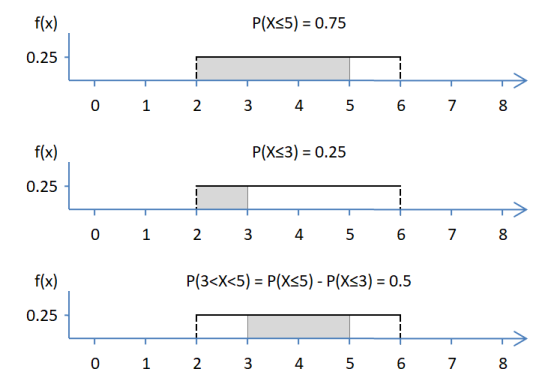Uniform distribution
Questions related to the continuous uniform distribution come up during interviews because the calculations associated with this distribution are relatively straightforward.
A random variable is usually denoted as \(X\) and a continuous uniform distribution on a range \([a, b]\) is denoted as \(U(a, b)\).
Recall that punif(q = k, min = a, max = b) calculates \(P(X \le k)\) for \(X \sim U(a, b)\).
You can derive the probability that a random variable falls into a range as a difference of the two cumulative probabilities: \(P(j < X < k) = P(X \le k) - P(X \le j)\)
See the example below for \(X \sim U(2, 6)\):

Cet exercice fait partie du cours
Practicing Statistics Interview Questions in R
Exercice interactif pratique
Passez de la théorie à la pratique avec l’un de nos exercices interactifs
 Commencer l’exercice
Commencer l’exercice